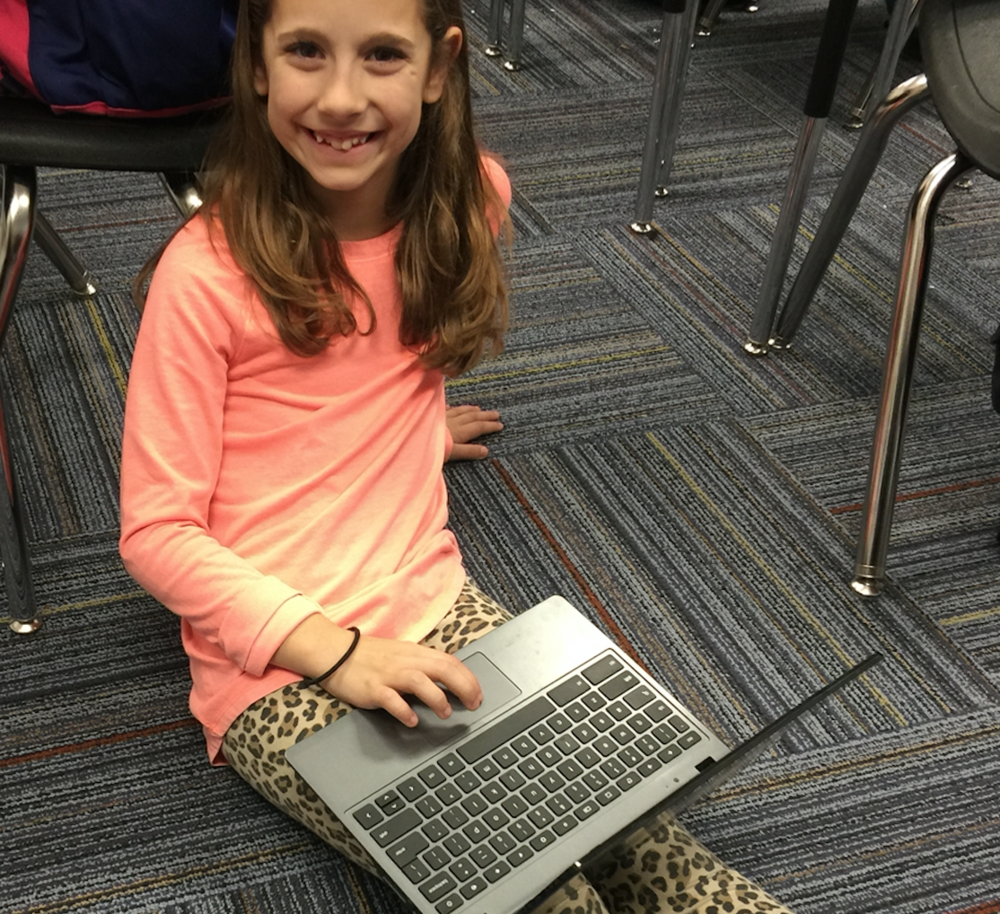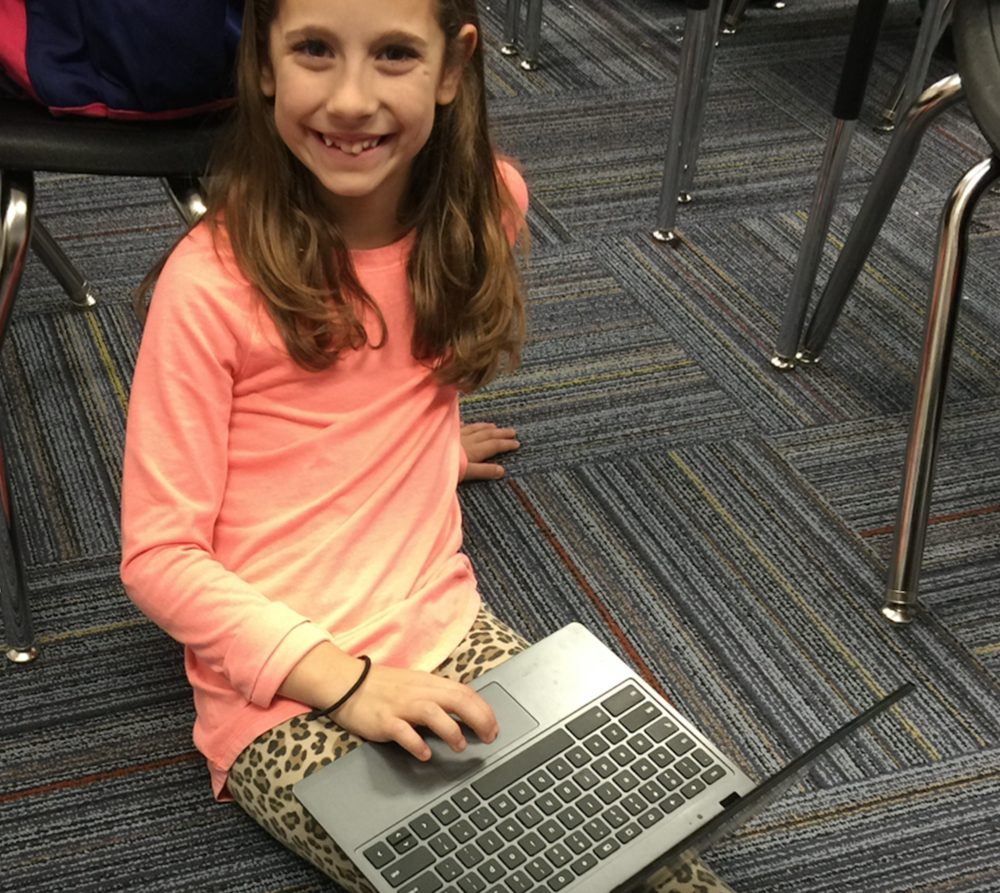
Section Branding
Header Content
Digital Pathways To Differentiation
Primary Content

Differentiation is often a word that is drilled into our brains early on in our teaching careers. For myself, I have heard that magic word since I took my first education class in college. I knew differentiation was one of the keys to successful student achievement, however it wasn't until I began teaching 5th grade inclusion that I truly saw the magic of differentiation in action. Each year that I have taught inclusion, I am presented with students that fall into all different categories of learning abilities. In reference to Gardner's Multiple Intelligences, my students are all over the place! This challenges me to find new and innovative ways to meet the needs of all students in my classroom.

Differentiation looks different in any given classroom; however over the years I have incorporated several different techniques, strategies and resources in order to see differentiation have a true positive impact on my students. My students come to me with many strengths and weaknesses. One resources that I have been able to use incorporate this school year is Thrively. This website allows me to assess my students' strengths and weaknesses in a fun and innovative way. For example, this year after my students took the assessment I was able to see that 75% of my class showed a strength in resilience. This was extremely encouraging to me as a teacher because it allowed me to push my students to new limits and know deep down that they could handle challenges. From their perspective, they have enjoyed taking the assessment and reading the results about themselves. Almost all of my students have read their results, looked at me, and completely agreed with what the computer told them were their strengths. They became excited and engaged, wanting to explore the website more!
Thrively not only tailors to their interests based on the assessment, but it also allows them to explore career options and activities that are local to their area based on their identified strengths. I know this has been a successful tool in my classroom because I can use the data and apply it to my teaching strategies. I am aware, based on the Thrively data, that a lot of my students struggle with independence because they want the affirmation from an adult along the way. I have seen this in my own classroom observations and it was affirmed after reviewing the data on Thrively. As a result, this data allows me to find work that is not only grade level appropriate, but also helps close the gaps that many students have which hinder their ability to feel independent in my classroom.
By getting to know my students on a deeper and more personal level, it allows me to connect their inner thoughts and feelings to my day to day instruction. All in all, teaching is about making learning a connection to the real world. Using resources that allow me to know my students and their multiple intelligences has encouraged me to expand my differentiation strategies. I want my students to "buy in" to what they are learning in order for them to truly have a passion and desire to be resilient and take ownership over their work in my classroom.
Differentiation is often a word that is drilled into our brains early on in our teaching careers. For myself, I have heard that magic word since I took my first education class in college. I knew differentiation was one of the keys to successful student achievement; however it wasn't until I began teaching 5th grade inclusion that I truly saw the magic of differentiation in action. Each year that I have taught inclusion, I am presented with students that fall into all different categories of learning abilities. In reference to Gardner's Multiple Intelligences, my students are all over the place! This challenges me to find new and innovative ways to meet the needs of all students in my classroom.

Differentiation looks different in any given classroom. Over the years, however, I have incorporated several different techniques, strategies and resources in order to see differentiation have a true positive impact on my students. My students come to me with many strengths and weaknesses. One resources that I have been able to use incorporate this school year is Thrively. This website allows me to assess my students' strengths and weaknesses in a fun and innovative way. For example, this year after my students took the assessment I was able to see that 75% of my class showed a strength in resilience. This was extremely encouraging to me as a teacher because it allowed me to push my students to new limits and know deep down that they could handle challenges. From their perspective, they have enjoyed taking the assessment and reading the results about themselves. Almost all of my students have read their results, looked at me, and completely agreed with what the computer told them were their strengths. They became excited and engaged, wanting to explore the website more!
Thrively not only tailors to their interests based on the assessment, but it also allows them to explore career options and activities that are local to their area based on their identified strengths. I know this has been a successful tool in my classroom because I can use the data and apply it to my teaching strategies. I am aware, based on the Thrively data, that a lot of my students struggle with independence because they want the affirmation from an adult along the way. I have seen this in my own classroom observations and it was affirmed after reviewing the data on Thrively. As a result, this data allows me to find work that is not only grade level appropriate, but also helps close the gaps that many students have which hinder their ability to feel independent in my classroom.
By getting to know my students on a deeper and more personal level, it allows me to connect their inner thoughts and feelings to my day to day instruction. All in all, teaching is about making learning a connection to the real world. Using resources that allow me to know my students and their multiple intelligences has encouraged me to expand my differentiation strategies. I want my students to "buy in" to what they are learning in order for them to truly have a passion and desire to be resilient and take ownership over their work in my classroom.
Secondary Content
Bottom Content





